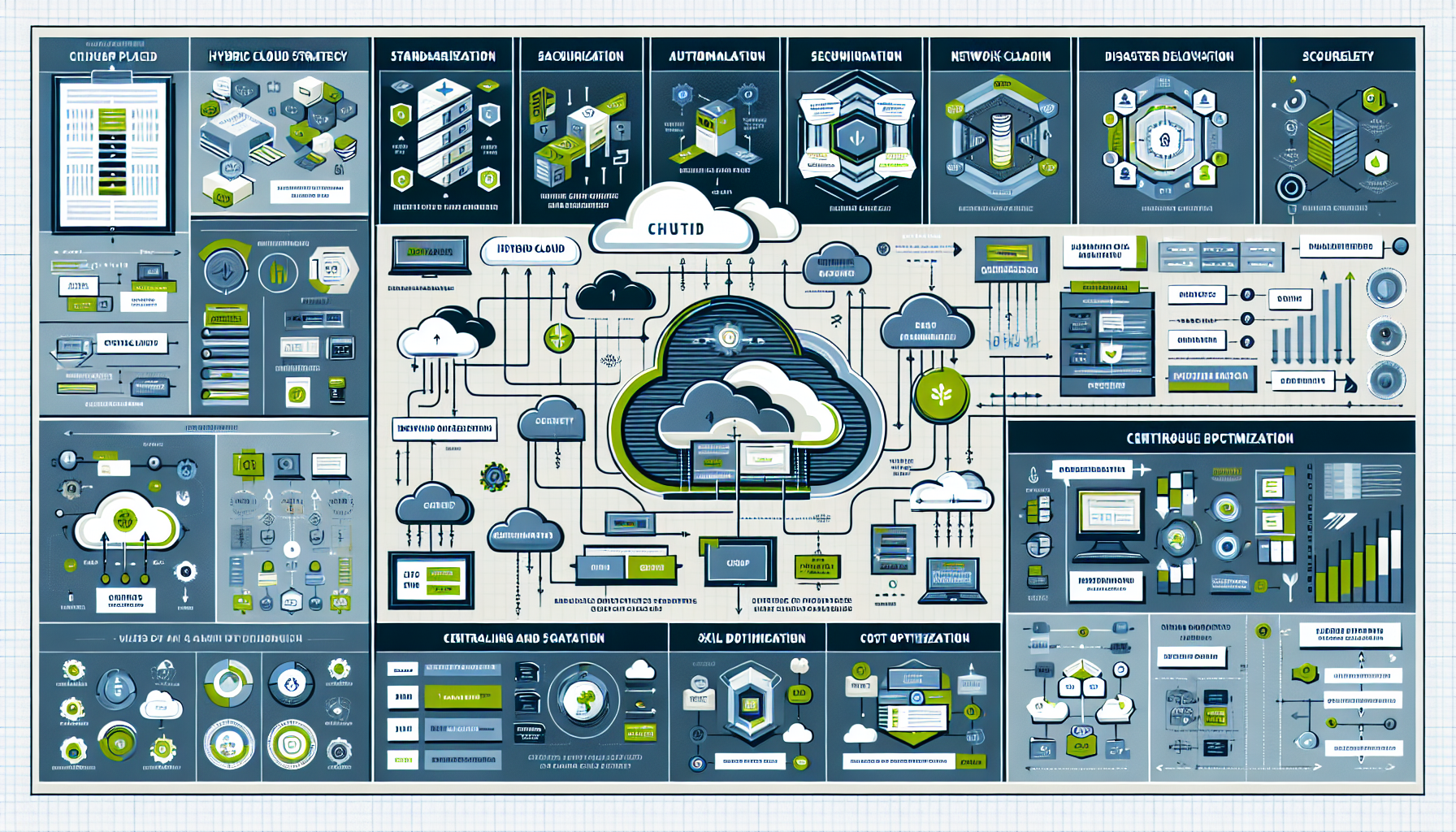Managing hybrid cloud environments can be complex due to the integration of on-premises infrastructure with public and private cloud resources. However, following best practices can help ensure optimal performance, security, and scalability. Here are the key best practices for managing hybrid cloud environments:
1. Establish a Clear Hybrid Cloud Strategy
- Define Objectives: Clearly outline the business and technical goals for adopting a hybrid cloud model (e.g., cost optimization, scalability, disaster recovery).
- Workload Placement: Decide which workloads should remain on-premises, move to the public cloud, or operate in both environments.
- Vendor Evaluation: Choose cloud providers that align with your business needs and offer seamless integration with your on-premises systems.
2. Standardize and Automate Processes
- Automation Tools: Use tools like Terraform, Ansible, or cloud-native solutions to automate deployment, configuration, and management across environments.
- Unified Management Platforms: Invest in tools that provide a single pane of glass for monitoring and managing resources across on-premises and cloud systems.
- Standardized Policies: Enforce consistent policies for security, governance, and compliance across all environments.
3. Optimize Network Connectivity
- Low-Latency Connections: Implement solutions like Direct Connect (AWS), ExpressRoute (Azure), or Cloud Interconnect (GCP) for fast, secure connections between on-premises and cloud.
- SD-WAN: Use software-defined networking to optimize traffic routing and improve performance.
- Load Balancing: Distribute workloads intelligently to avoid bottlenecks and enhance availability.
4. Prioritize Security and Compliance
- Unified Security Policies: Ensure security policies are consistent across on-premises and cloud environments.
- Data Encryption: Encrypt data at rest, in transit, and during processing.
- Access Control: Use role-based access control (RBAC) and enforce least privilege principles.
- Compliance Monitoring: Regularly audit systems for compliance with regulatory requirements (e.g., GDPR, HIPAA).
5. Centralize Monitoring and Performance Management
- Monitoring Tools: Use monitoring platforms like Prometheus, Grafana, or cloud-native tools (e.g., AWS CloudWatch, Azure Monitor) to track resource utilization and performance.
- Alerting and Incident Response: Set up automated alerts for issues and establish a clear incident response plan.
- Capacity Planning: Regularly analyze resource consumption and plan for future growth.
6. Implement Robust Backup and Disaster Recovery
- Hybrid Backup Solutions: Use tools that support both on-premises and cloud backups (e.g., Veeam, Cohesity, or Commvault).
- Disaster Recovery (DR): Design a DR plan that leverages the cloud for failover and ensures minimal downtime.
- Test Regularly: Perform regular DR tests to ensure backup integrity and recovery processes work as expected.
7. Leverage Kubernetes and Containers
- Containerization: Use Kubernetes and Docker to build portable applications that can run seamlessly across on-premises and cloud environments.
- Hybrid Kubernetes Platforms: Consider solutions like Red Hat OpenShift, VMware Tanzu, or Azure Arc to manage Kubernetes clusters across hybrid environments.
- Service Mesh: Employ service mesh solutions like Istio or Linkerd to standardize communication between microservices.
8. Optimize Costs
- Cloud Cost Management Tools: Use tools like CloudHealth, Cloudability, or native cloud cost management tools to monitor and optimize cloud spending.
- Rightsizing Resources: Regularly evaluate resource usage and scale up/down as needed to avoid over-provisioning.
- Reserved Instances: Leverage reserved instances or savings plans for predictable workloads to reduce costs.
9. Enable DevOps and CI/CD Pipelines
- DevOps Practices: Implement DevOps principles to streamline collaboration between development and operations teams.
- CI/CD Pipelines: Use tools like Jenkins, GitLab CI/CD, or Azure DevOps to automate application delivery across hybrid environments.
- Environment Consistency: Use Infrastructure-as-Code (IaC) to ensure consistent environment provisioning.
10. Plan for Scalability and Flexibility
- Cloud Bursting: Design systems that can burst into the cloud during peak demand while maintaining critical on-premises workloads.
- Elasticity: Take advantage of cloud services that can auto-scale based on usage.
- Future-Proofing: Regularly review and update your architecture to adapt to changing business needs and emerging technologies.
11. Train Your IT Team
- Skill Development: Ensure your team is trained in hybrid cloud technologies, including virtualization, Kubernetes, cloud platforms, and automation tools.
- Certifications: Encourage certifications from major providers (e.g., AWS, Azure, GCP) to deepen expertise.
- Cross-Functional Knowledge: Promote knowledge-sharing between on-premises and cloud-focused teams to avoid silos.
12. Regularly Review and Optimize
- Periodic Audits: Conduct regular reviews of your hybrid cloud architecture, usage, and security.
- Performance Tuning: Continuously monitor workloads and fine-tune configurations for better performance.
- Stay Updated: Keep up with new features and services from your cloud providers to leverage innovations.
By following these best practices, you can maximize the efficiency, security, and scalability of your hybrid cloud environment, ensuring it aligns with your organization’s long-term goals.



